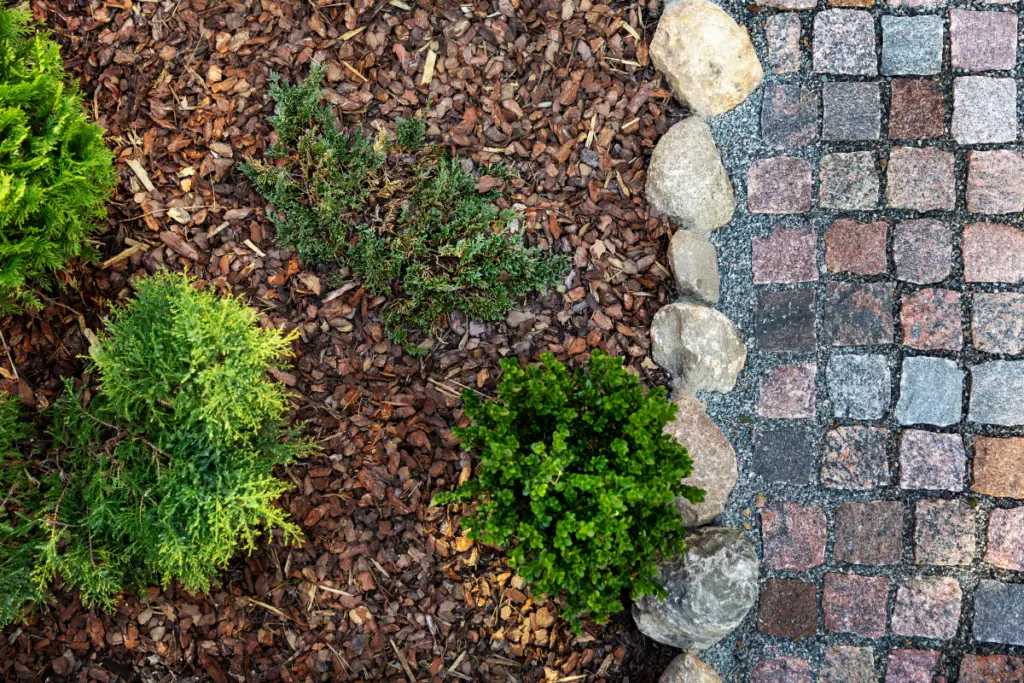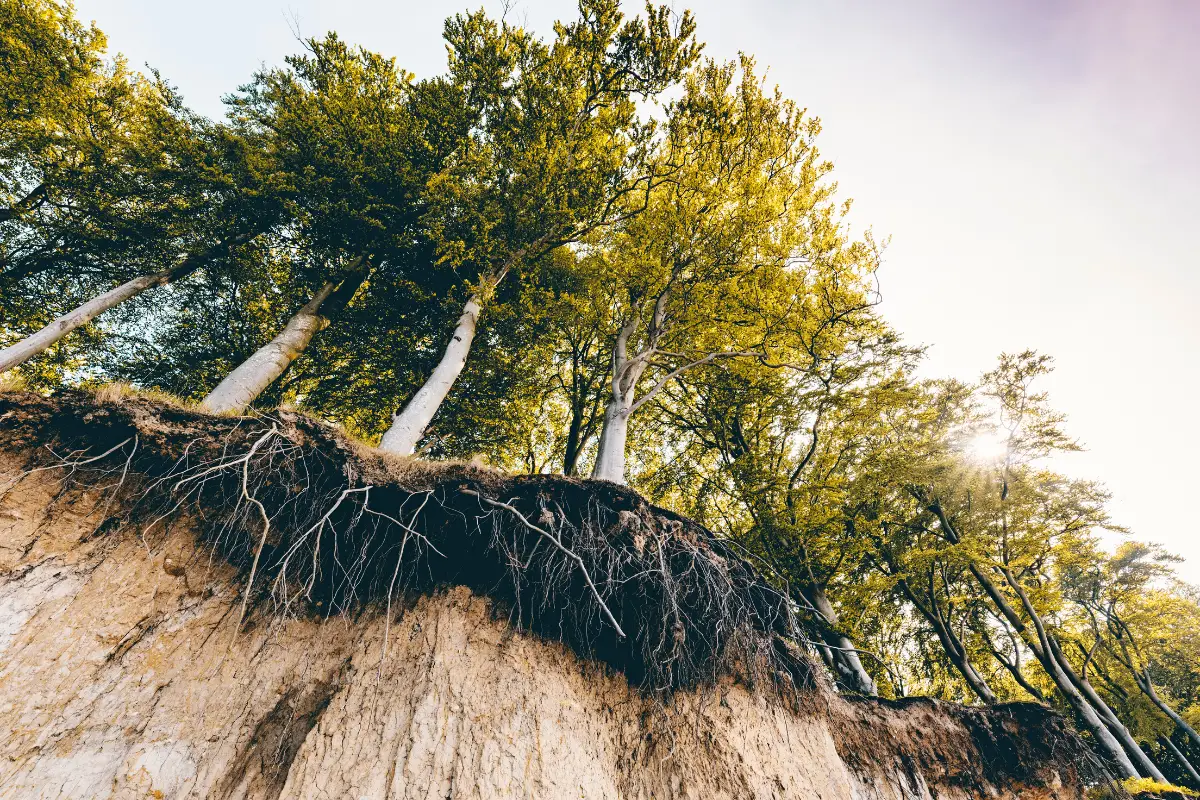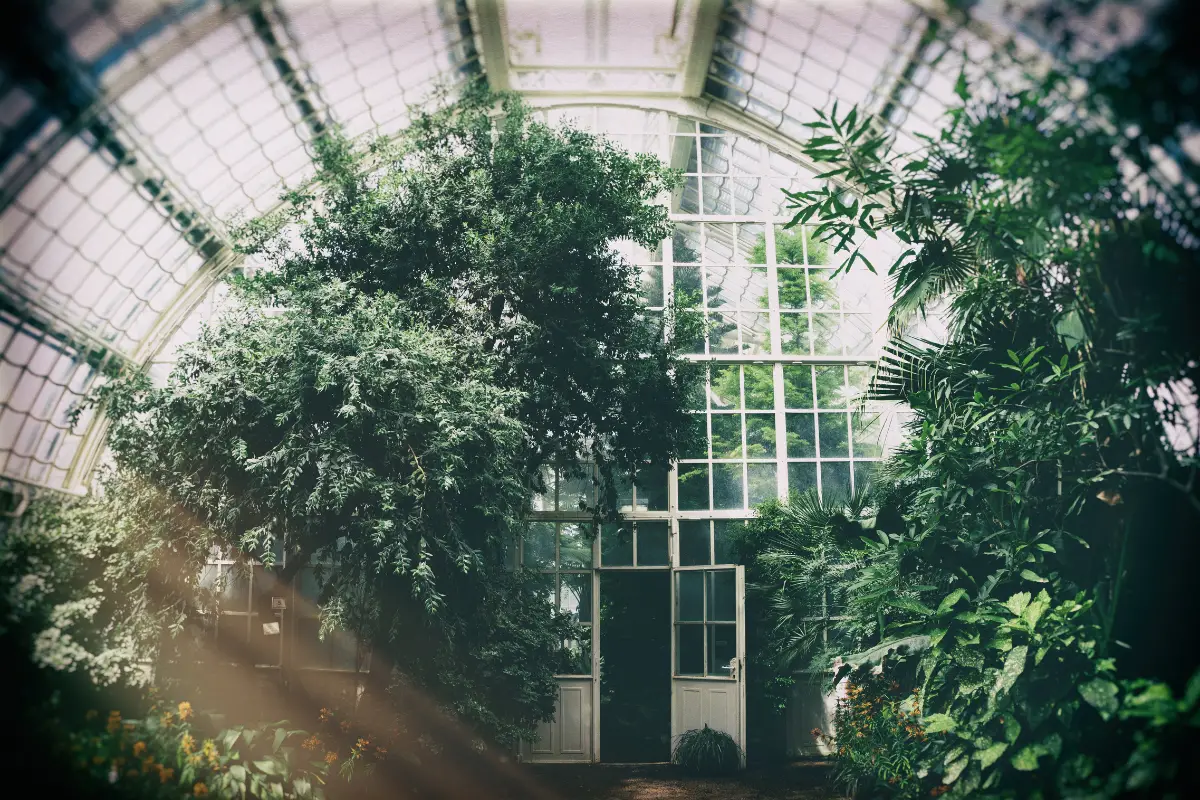Rocks are an essential part of the natural world and can be found in every corner of the planet. They come in different shapes, sizes, and colors, and each has its unique characteristics.
Backyards are not exempt from the presence of rocks, and it is not uncommon to find them scattered around the garden.
Some of these rocks may look ordinary, but they could be hiding valuable minerals that are worth exploring.
In this article, we will explore the six most common rocks you can find in backyards. We will discuss their characteristics, how they are formed, and their uses.
The article aims to provide readers with valuable knowledge about the rocks in their backyard and what they could potentially be used for.
If you are someone who enjoys exploring the natural world or has an interest in geology, then this article is for you.

Table of Contents
1. Granite
Granite is one of the most common rocks found in backyards. It is an igneous rock that forms from the slow crystallization of magma deep beneath the Earth’s surface.
Granite is composed mainly of quartz, feldspar, and mica, and is known for its durability and resistance to weathering.
Granite is typically light-colored, ranging from white to pink, gray, and black. It has a coarse-grained texture with large, interlocking crystals of translucent to off-white quartz, white to dark pink feldspar, and darker micas and amphiboles.
Its crystals are roughly equal-sized and it is relatively light in color, lacking any structural features like layering, banding, or fossils.
Granite is commonly used as a building material, particularly for countertops, flooring, and monuments. It is also used in landscaping as decorative rocks, retaining walls, and pathway materials.
Due to its durability and resistance to weathering, granite can withstand harsh outdoor conditions and maintain its appearance for many years.
While granite is a common rock found in backyards, it is important to note that not all granites are created equal.
The quality and composition of granite can vary greatly depending on its source and geological history.
It is always best to consult with a geologist or professional when considering the use of granite in construction or landscaping projects.
2. Basalt
Basalt is a dark-colored igneous rock that is commonly found in backyard landscapes. It is formed from solidified lava and is typically fine-grained in texture.
Basalt is composed of minerals such as pyroxene, plagioclase feldspar, and alkali feldspars.
The plagioclase feldspar in true basalt is rich in calcium, typically a species called labradorite.
Basalt is often used as a construction material due to its durability and strength. It is also used in landscaping as a decorative rock.
Most of the basalt found on Earth was produced in just three rock-forming environments: oceanic divergent boundaries, oceanic hotspots, and mantle plumes and hotspots beneath continents.
Basalt is commonly found in parts of the U.S. Northwest, such as the Columbia River Basalt Group, which covers a large area in the Pacific Northwest.
Basalt is a popular choice for rockhounds and collectors due to its unique appearance and composition.
It is often used in jewelry making and other crafts. Basalt can be identified by its dark color, fine-grained texture, and the presence of minerals such as pyroxene and plagioclase feldspar.
Overall, basalt is a common and versatile rock that can be found in many backyard landscapes.
Its durability and unique appearance make it a popular choice for construction and decorative purposes.
3. Limestone
Limestone is a sedimentary rock that is commonly found in backyards. It is composed mainly of calcium carbonate, which is derived from the remains of marine organisms.
Limestone is often used in landscaping because of its natural beauty and durability.
One of the most common uses of limestone in landscaping is as a decorative rock. Limestone rocks come in a variety of colors, including white, gray, and tan.
They can be used to create borders, pathways, and retaining walls. Limestone is also a popular choice for garden beds and as a filler material for areas where grass will not grow.
Limestone is also used in construction as a building material. It is often used as a base material for roads, driveways, and walkways. Crushed limestone is also used as a base material for concrete and asphalt.
It is important to note that limestone is susceptible to erosion and weathering. Over time, limestone can develop cracks and fissures, which can weaken the rock.
It is important to properly maintain and care for limestone rocks to ensure their longevity.
Overall, limestone is a versatile and durable rock that is commonly found in backyards. It can be used for a variety of landscaping and construction purposes and adds natural beauty to any outdoor space.
4. Sandstone
Sandstone is a sedimentary rock that is composed of sand-sized grains of mineral, rock, or organic material. It is one of the most common rocks found in backyard landscapes.
Sandstone is formed when sand grains are compacted and cemented together over time.
The color of sandstone varies depending on the minerals present in the sand. It can be white, gray, yellow, red, or brown.
The texture of sandstone can also vary from smooth to rough, depending on the size and shape of the sand grains.
Sandstone is a durable rock that is resistant to weathering and erosion. It is commonly used in landscaping for pathways, retaining walls, and decorative features.
Sandstone is also used as a building material for construction projects.
Some common types of sandstone include arkose, graywacke, and quartzite. Arkose sandstone is composed of feldspar and quartz grains, while graywacke sandstone is composed of quartz, feldspar, and rock fragments.
Quartzite sandstone is composed of quartz grains that have been recrystallized under heat and pressure.
Sandstone can also contain fossils, which can provide clues about the history of the area where it was formed. Fossils found in sandstone can include shells, bones, and plant material.
Overall, sandstone is a versatile and durable rock that is commonly found in backyard landscapes.
Its unique colors and textures make it a popular choice for landscaping and construction projects alike.
5. Shale
Shale is a common sedimentary rock found in many backyards. It is composed of fine-grained particles that have been compacted and cemented together.
Shale is typically gray or black, but can also be brown or red. It is often mistaken for slate or mudstone, but can be distinguished by its fissility, or ability to split into thin layers.
Shale is formed from mud or clay that has been deposited in a calm body of water, such as a lake or ocean.
Over time, the weight of the overlying sediment compacts the mud, squeezing out any water or air pockets and causing the particles to stick together.
Minerals such as quartz, feldspar, and mica may also be present in shale, giving it a speckled appearance.
One of the defining characteristics of shale is its ability to break into thin, flat pieces. This property, known as fissility, is due to the alignment of clay minerals in the rock.
Shale can be used in a variety of applications, including as a source of oil and gas, as a building material, and as a decorative stone in landscaping.
While shale is a common rock type, it is important to note that not all shale is created equal.
Some shale formations may contain harmful substances such as asbestos or heavy metals, which can pose a health risk if disturbed.
It is important to exercise caution when handling shale and to seek professional advice if you suspect that your shale may be contaminated.
Overall, shale is a versatile and common rock type that can be found in many backyards.
Its unique properties make it useful for a variety of applications, but it is important to be aware of any potential health risks associated with handling shale.
Conclusion
In conclusion, there are many different types of rocks that can be found in backyards across the country.
The most common rocks include quartz, granite, limestone, shale, sandstone, and basalt.
Each of these rocks has unique properties and characteristics that make them interesting to study and collect.
Quartz is the most abundant rock on earth and can be found in many different colors and varieties. Granite is a popular rock for use in construction and landscaping due to its durability and attractive appearance.
Limestone is often used in the production of cement and as a building material. Shale is a sedimentary rock that is often found in layers and can contain fossils.
Sandstone is a popular rock for use in decorative landscaping due to its unique texture and color. Basalt is an igneous rock that is often found in volcanic areas and can be used as a building material.
Overall, studying the rocks in your backyard can be a fun and educational experience. By learning about the different types of rocks and their properties, you can gain a better understanding of the geology of your area and the world around you.
Whether you are a collector, a hobbyist, or just interested in learning more about the natural world, there is something for everyone in the world of backyard geology.
- How to Build a Planter Box for Bamboo: A Step-by-Step Guide

- Can Robotic Lawnmowers Handle Steep Slopes?

- Do You Need a Specific Lawn for a Robotic Lawnmower? Expert Advice

- Are Robotic Lawnmowers Safe for Pets and Children? Safety Features of Robotic Lawnmowers

- Why Use Robotic Lawnmowers? Advantages of Using a Robotic Lawnmower

- Is the GARDENA SILENO City 300 Cordless or Corded? A Clear Answer














